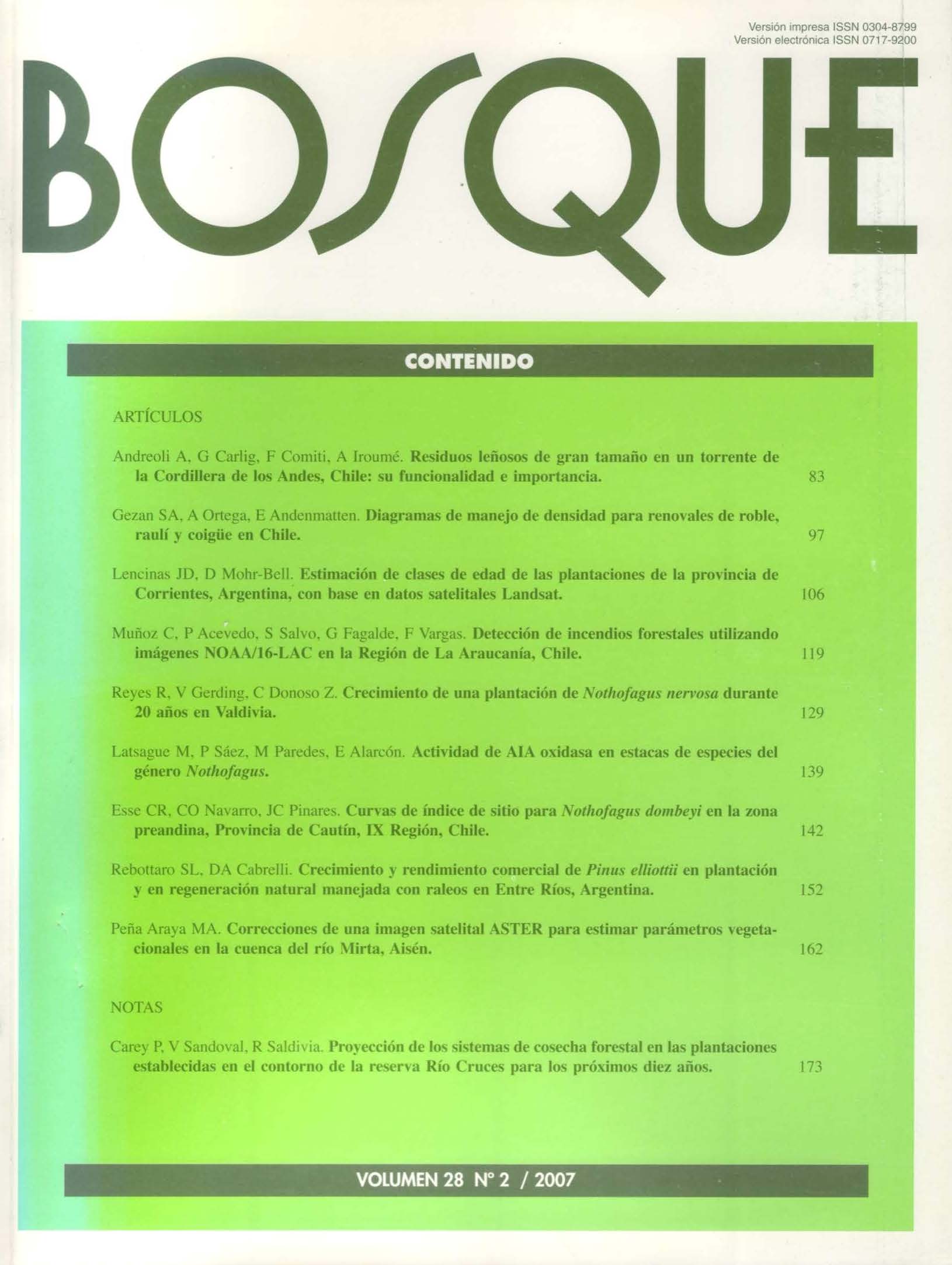Growth and commercial yield of Pinus elliottii in planting and natural regeneration managed with thinnings in Entre Ríos, Argentina
Main Article Content
Abstract
Pinus elliottii is an exotic species very much cultivated in Argentina, with potential to regenerate naturally. When high density ocurres, a control over initial stocking is necessary. The object of the work was to evaluate the effects of the early thinning of P. elliottii natural regeneration and its behavior concerning planting during six years. Treatments were: natural regeneration without thinning with 17,000 trees ha–1 (SR), thinning with residual density of 5,000 trees ha–1 (R1), thinning with density of 2,500 trees ha–1 (R2), and planting with 800 trees ha–1 (P). Diameter and height growth, allometric relationships, cylindrical form factor, size of the branch, basal area (AB), density index (IDR), and commercial yield were evaluated. Results indicated that natural regeneration has better initial performance contrasted to P. Early thinning of natural regeneration has positive effect on diameter and height growth. Trees in SR had most cylindrical form; whereas in P, trees had most conical form. Branches diameter and length decrease as density of trees increases. After six years of treatments, SR reached highest AB and volume ha–1, but lacking commercial value. Independently from intensity of thinning applied, early control of density produced high wood volume although presenting small sizes (diameter ≥ 7 cm). The R2 treatment reached the highest commercial wood volume presenting diameters ≥ 10 cm. In the context of density management of the species, the results obtained of IDR and individual growth were discussed.

